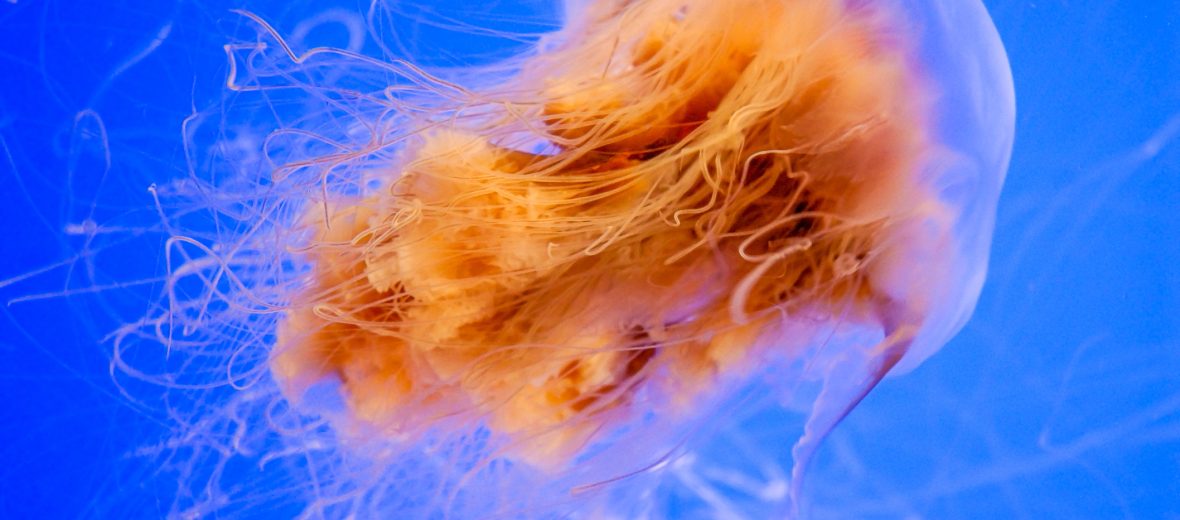
The lion’s mane jellyfish, aka arctic red jellyfish, giant jellyfish, or hair jelly, can be found in the frigid, boreal waters of the Arctic, northern Pacific, and northern Atlantic Oceans. These jellies are not currently evaluated by the IUCN. They need a higher salinity to breed, so they aren’t typically found in water with a lower specific gravity. This is 1 thing keeping them in check.
First the Stats…
Scientific name: Cyanea capillata
Weight: Up to 200 lbs.
Length: Up to 7 feet – Bell, with tentacles up to 120 feet
Lifespan: Up to 1 year
Now on to the Facts!
1.) Certain anemones, leatherback sea turtles, and ocean sunfish prey on lion’s manes.
2.) The lion’s mane preys on a variety of sea creatures, including fish, zooplankton, and other jellyfish.
3.) They can have up to 1,200 tentacles. The tentacles are divided up into each of the 8 segments of this jellyfish’s bell. Each segment having upwards of 150+ tentacles.
4.) These jellies rarely dive deeper than 66 feet.
5.) Reproduction can be both sexually – in their medusa stage, and asexually – as polyps.
But wait, there’s more on the lion’s mane jellyfish!
6.) Even though they don’t technically have a brain, they do possess a central nervous system, located in their hood.
7.) In what is called a shoal, these jellies can sometimes be seen grouped together in nearly 1 mile wide gatherings.
Did you know…?
Being stung by 1 of these jellies feels like swimming into warmer and somewhat bubbly water. The pain will soon follow. But there is not much risk of death, other than someone with a compromised immune system or an individual panicking and drowning, as a result of being stung.
8.) July of 2010, an estimated 150 beach-goers were stung by the remains of a lion’s mane jelly.
9.) These jellies have been touted as 1 of the largest creatures on earth. But the bootlace worm is thought to be larger. However, this is debatable as these worms can stretch out far longer than their original length.
10.) They’re named after their “mane” of long, hair-like tentacles hanging from their bell.
Now a Short Lion’s Mane Jellyfish Video!
Be sure to share & comment below! Also, check out the Critter Science YouTube channel. Videos added regularly!
Want to suggest a critter for me to write about? Let me know here.
Think you know a lot about critters? Try your hand at these fun, free quizzes:
Photo credit: Photo by: Maik Brand



